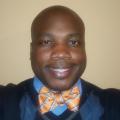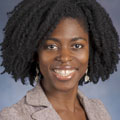
NOTE: An update on the outcome of this vote follows the original post.
I realize you might think I am being a bit premature with this declaration, but I am not talking about the November elections. I am referring to a critical vote—a referendum—in Georgia that will influence the direction of transportation funding in the coming years.


 Like many organizations, we at the Safe Routes to School National Partnership like to have data to back up our opinions.
Like many organizations, we at the Safe Routes to School National Partnership like to have data to back up our opinions. It’s back to school time! Time for new experiences, teachers, friends, classrooms, subjects and maybe even shiny new Safe Routes to School infrastructure projects.
It’s back to school time! Time for new experiences, teachers, friends, classrooms, subjects and maybe even shiny new Safe Routes to School infrastructure projects. As we all head back to school, it is exciting to see more and more children and families walking and bicycling to school each morning.
As we all head back to school, it is exciting to see more and more children and families walking and bicycling to school each morning. Ever wondered how effective Safe Routes to School programs are at increasing walking and bicycling to school? A new multi-state study gives a resounding answer to that question.
Ever wondered how effective Safe Routes to School programs are at increasing walking and bicycling to school? A new multi-state study gives a resounding answer to that question. It’s everywhere in the news – American’s overweight and obesity rates in this generation have soared.
It’s everywhere in the news – American’s overweight and obesity rates in this generation have soared. Everyone travels. Whether it is for work, school or play, how we as individuals and as a society travel has impacts that go far beyond the seemingly simple and routine act of going from one place to another. This common trait provides an ideal intervention point for public health practitioners.
Everyone travels. Whether it is for work, school or play, how we as individuals and as a society travel has impacts that go far beyond the seemingly simple and routine act of going from one place to another. This common trait provides an ideal intervention point for public health practitioners. The
The  If you don’t already have these two 2013 conferences on your radar, you will want to make sure to add them now. First off, New Partners for Smart Growth, taking place February 7-9 in Kansas City, Missouri is now open for registration. Known for jazz, barbecue and fountains, Kansas City is a creative community that prides itself on good times and friendly, fun-loving people.
If you don’t already have these two 2013 conferences on your radar, you will want to make sure to add them now. First off, New Partners for Smart Growth, taking place February 7-9 in Kansas City, Missouri is now open for registration. Known for jazz, barbecue and fountains, Kansas City is a creative community that prides itself on good times and friendly, fun-loving people. I’ve written a lot in the past few months about implementation of the federal MAP-21 transportation law at the state level, but there are still many issues and processes remaining at the federal level. So this month, I thought I’d touch on a few of them.
I’ve written a lot in the past few months about implementation of the federal MAP-21 transportation law at the state level, but there are still many issues and processes remaining at the federal level. So this month, I thought I’d touch on a few of them. Safe Routes to School has the amazing capacity to stretch its boundaries across the fields of health, transportation, safety, environment and more. This elasticity is an enormous advantage in terms of marketing the benefits of walking and bicycling to and from school as an effective approach to addressing major issues in all fields.
Safe Routes to School has the amazing capacity to stretch its boundaries across the fields of health, transportation, safety, environment and more. This elasticity is an enormous advantage in terms of marketing the benefits of walking and bicycling to and from school as an effective approach to addressing major issues in all fields.